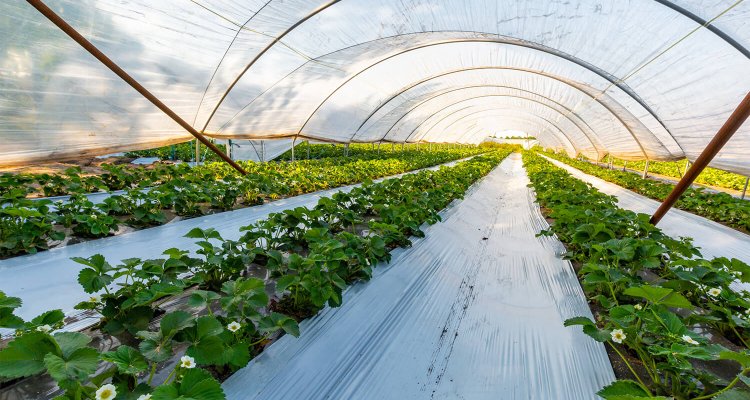
Project
Biobased, safe and non-accumulating cultivation aids for agri- and horticulture
Plastic products play a crucial role in our modern agri- and horticultural processes as their unique functionalities make cultivation more efficient and effective. However, after their functional lifetime often difficulties to reuse or recycle the plastic products arise. This leads to material losses and plastic accumulation and pollution of soils and waters. This project will demonstrate the development and applicability of plastic cultivation aids that are designed for optimal performance during use and end-of-life.
This project aims to effectively close the loop for plastic products used in agri- and horticulture to lower the use of fossil carbon and prevent plastic contamination of soil or natural waters. The project will develop methods and products for applications within both greenhouses and open fields. Within these two cultivation environments, different end-of-life scenarios of plastics will be explored, such as mechanical recycling, industrial composting and programmed biodegradation in soil.
Within all EOL-environment combinations, specific cases will be studied that have the aim to either optimise the current circular use of plastic for these applications or develop entirely new products with improved EOL characteristics. In doing so, newly implemented agricultural plastic recycling loops, optimised recycling processes and new biodegradable (both compostable and in soil) products with programmed biodegradable characteristics in soil will be developed.
Specific attention will be given to cultivation related issues that complicate closed loop recycling (e.g. contamination of plant viruses) and new strategies to program the biodegradation rate of compostable plastics in order to match crop specific cultivation cycles.
The project builds on the decision support tool that was developed during an earlier project (LWV21192). This tool can be used by policy officers, plastic supply chain industries, farmers and growers to select the best performing plastic for a specific application. Results from this new project will be used to update and reinforce this decision tool.